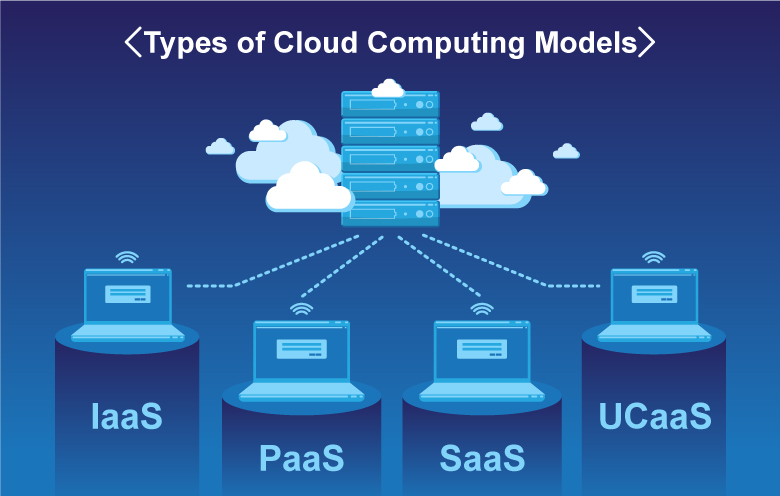Drive Innovation: Harnessing the Power of Cloud Provider
In the busy landscape of modern-day organization, using the power of cloud solutions has actually come to be an essential aspect for companies aiming to drive innovation and preserve an affordable edge. The ability to scale resources dynamically, embrace advanced technologies flawlessly, and streamline development processes successfully can significantly influence a company's ability to adapt and innovate. As we check out the complex partnership between cloud services and innovation, fascinating insights on exactly how cloud solutions change traditional organization practices and lead the method for groundbreaking developments will be revealed.
Benefits of Cloud Provider
Cloud services use countless advantages to individuals and services looking for reliable and adaptable options for their electronic needs. One of the crucial advantages of making use of cloud services is the cost-effectiveness they offer.
In addition, cloud services improve accessibility and collaboration among teams. With information stored in the cloud, employees can securely access files and applications from anywhere with a net connection, advertising remote job capacities and increasing efficiency. Real-time partnership functions enable numerous customers to service papers simultaneously, promoting seamless teamwork regardless of physical place.
One more advantage of cloud services is the boosted information safety and security and catastrophe recovery they offer. Cloud companies carry out sophisticated security actions to safeguard data from cyber hazards, guaranteeing compliance with sector guidelines. Furthermore, automatic backups and healing solutions minimize the threat of data loss due to unforeseen occasions, supplying comfort to customers.
Cloud Movement Approaches
Transitioning to shadow solutions involves precise planning and strategic execution to ensure a smooth and efficient movement process. There are several cloud migration strategies that organizations can think about when moving their operations to the cloud. One common approach is the 'Rehost' method, where applications are raised and moved to the cloud with very little changes. This approach fasts yet might not fully maximize cloud benefits. The 'Replatform' strategy entails making some cloud optimizations during movement, such as updating the application architecture to make the most of cloud-native functions. universal cloud Service. For an extra detailed change, the 'Refactor' strategy includes rearchitecting applications to be cloud-native, enhancing scalability and efficiency. Additionally, the 'Repurchase' method includes changing existing software application with cloud-based alternatives, while the 'Retire' strategy includes deactivating redundant applications. Picking the best migration strategy relies on elements like price, timeline, and desired outcomes, requiring a cautious evaluation of each choice's obstacles and advantages.
Enhancing Cooperation in the Cloud
Enhancing team cooperation with cloud-based devices can significantly increase efficiency and simplify communication within companies. By leveraging cloud solutions, groups can interact perfectly no matter their physical areas, making it possible for real-time collaboration on projects. Cloud-based communication tools such as Slack, Microsoft Teams, or Google Work space supply a central system for team members to share documents, exchange ideas, and coordinate jobs efficiently. These tools supply features like immediate messaging, video conferencing, data sharing, and job administration, boosting team effort and decreasing reliance on conventional communication approaches like emails.

Safety And Security Factors To Consider for Cloud Fostering
Just how can companies guarantee the durable protection of their information when adopting cloud services? Safety and security considerations are vital in the fostering of cloud solutions. Normal protection audits and surveillance of the cloud environment assistance in identifying and mitigating any safety and security breaches promptly.

Cloud-Native Technology Practices
In the world of cloud computer, welcoming cloud-native development techniques is essential for companies aiming to optimize their digital framework and enhance operational performance. Cloud-native advancement practices include creating applications specifically for cloud atmospheres, leveraging the scalability, adaptability, and agility that cloud solutions offer. By developing applications with cloud-native concepts in mind, such as microservices style, containerization, and orchestration, organizations can improve their growth processes, enhance source application, and respond better to changing market demands.
Moreover, cloud-native technology techniques advertise continuous assimilation and continuous delivery (CI/CD) pipelines, allowing automated testing, implementation, and surveillance of applications. This iterative click to read approach fosters faster development cycles my company and improves general software program quality. Additionally, making use of serverless computer and handled services enables organizations to concentrate on establishing core service performances while unloading facilities administration jobs to shadow provider.
Essentially, accepting cloud-native technology practices empowers organizations to drive technology, increase time-to-market, and remain competitive in today's quickly evolving electronic landscape.
Verdict

As we discover the complex relationship in between cloud solutions and development, intriguing insights on just how cloud services revolutionize standard business methods and lead the way for groundbreaking advancements will certainly be browse around here disclosed. - universal cloud Service
There are a number of cloud migration techniques that companies can consider when moving their procedures to the cloud. Cloud-native innovation practices include creating applications specifically for cloud atmospheres, leveraging the scalability, adaptability, and dexterity that cloud solutions provide. In addition, the usage of serverless computing and managed services enables organizations to concentrate on creating core business performances while unloading framework monitoring jobs to shadow service suppliers.
It is crucial for firms to consider cloud migration techniques, improve partnership in the cloud, and focus on protection measures to make certain successful adoption of cloud services and drive development within their organization.